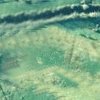


|
|
|
|
History of Ditton Corner Dittone has ancient roots Ditton Corner is an old house on a hill that was once an even older settlement. Quite how old we only discovered as we dug – literally – into the past. Well well well As we excavated the floor in the old kitchen a two-metre wide hole opened up that turned out to be a well, seven metres deep, still running with drinkable water. After some feasibility studies of maybe turning it into a wine cellar, a storage room or a reinforced bomb shelter, we finally followed our structural engineer’s advice and filled it in to prevent collapse. But not before we buried in the well a time capsule for future generations. Amongst other icons of our lives and times we included an original vinyl copy of Brown Sugar by the Rolling Stones, a mobile phone and a photo-album. The well wasn’t the only one – we found another in the front garden that had been filled in with ashes; and discovered a string of septic tanks and other excavations in the back. Our curiosity was aroused. Who were the users of these wells? What was their life like? Research Some parts of the history we knew about before we started the renovation, and others only came to light during the course of work on site. For one thing, the house had evidently been built in several stages. These had never been effectively tied together, and were proceeding to move apart. Of course, we put a stop to that with the application of large amounts of cold steel - but it started us wondering which bits had been built first, and how the house had been extended through the course of its life. The Village The chalk ridge overlooking the river, where Ditton Corner stands is the oldest inhabited part of the parish. References to "Dittone" (the Village on the Ditch) date back to 950 A.D., showing the strategic importance of its position at the north end of the Fleam Dyke. This is one of four parallel defensive earthworks, thought to date from the seventh century wars between the kingdoms of Mercia and East Anglia. It extends from the Cam here south-east to Quy fen, and then pops up again in the magnificently visible stretch from Fulbourn to Balsham - ten miles away.
View of Fen Ditton Church - it has a rowing weather vane The church occupies the commanding position overlooking the Cam and its water meadows from the line of the Dyke. From here in medieval times, wharves stretched along the river to north and south. This is close to the navigable limit of the Cam, where goods would have been unloaded for the Stourbridge Fair, held every September - which at its heyday was described by Defoe as the biggest in the world. In search of further enlightenment, we took ourselves to the University Library. The earliest comprehensive map we could find dates from 1808, the time of the Enclosures, when there was a wholesale land swap (not to say land grab). Our plot was then three separate pieces of land, which passed into the possession of one Thomas Panton. There were at least two houses here: one on the Church Street frontage; the other, possibly a boathouse, down towards the river.
1808 Map of Fen Ditton
House evolution From the first glance and close study of Banister Fletcher (joke for students of architecture), we had presumed that our house is mostly mid-Victorian in date. This is borne out by its appearance on the first Ordnance Survey map of 1887: an L-shaped block approached by a driveway on the northern side. At that time, there was still another house with extensive outbuildings on the road front.
1887 Map of Fen Ditton By a strange coincidence, the solicitor handling our purchase was able to show us a deed which had been drawn up in the 1930s by his father. This shows that the land towards the river had passed by then to Jesus College, and terracing had been carried out to create "the Lawns". This may well have done specifically to providing convenient platforms for viewing the Bumps, the rowing races which date back to the 1820s. By the turn of the century, they had become a major feature of the Cambridge social calendar. Contemporary sketches and photographs show an elegant event although the crowds must have included a somewhat cruder element if Rupert Brooke is to be believed: "Ditton girls are mean and dirty" Royal visits The social whirl continued on. Fen Ditton has a history of occasional royal visits. In the 13th century, Edwards I and II both stayed at the Biggin, the summer residence of the Bishop of Ely. In 1994, Gordon and Agatha Wood (from whom we bought the house) welcomed the Duke of Edinburgh to Ditton Corner, to watch the Bumps and present medals to the University women’s team. We feel privileged to inherit the history of this place, and hope to discover more of it in future.
Royal visitor to Mr. and Mrs. Wood - the previous owners of Ditton Corner.
The Duke of Edinburgh meets the University Ladies first VIII on the lawns of Ditton Corner. |